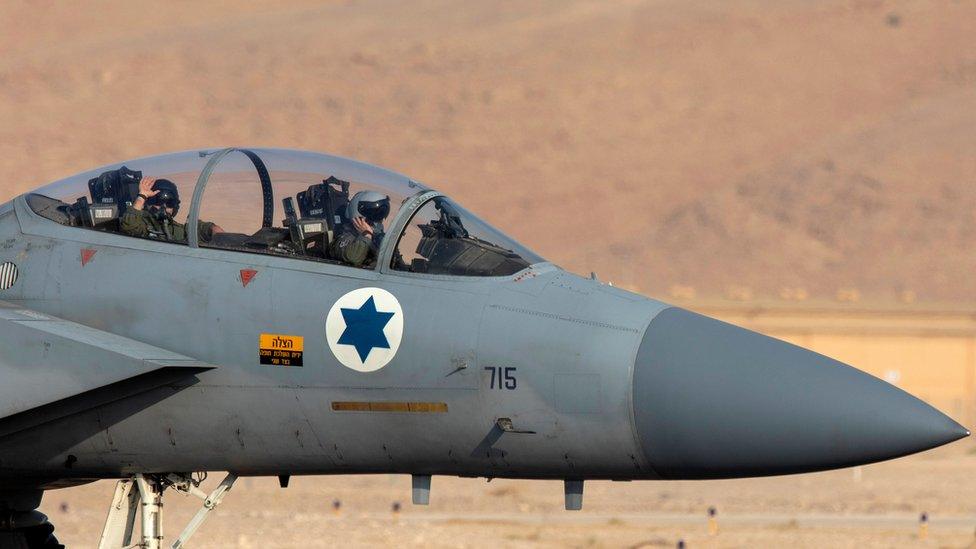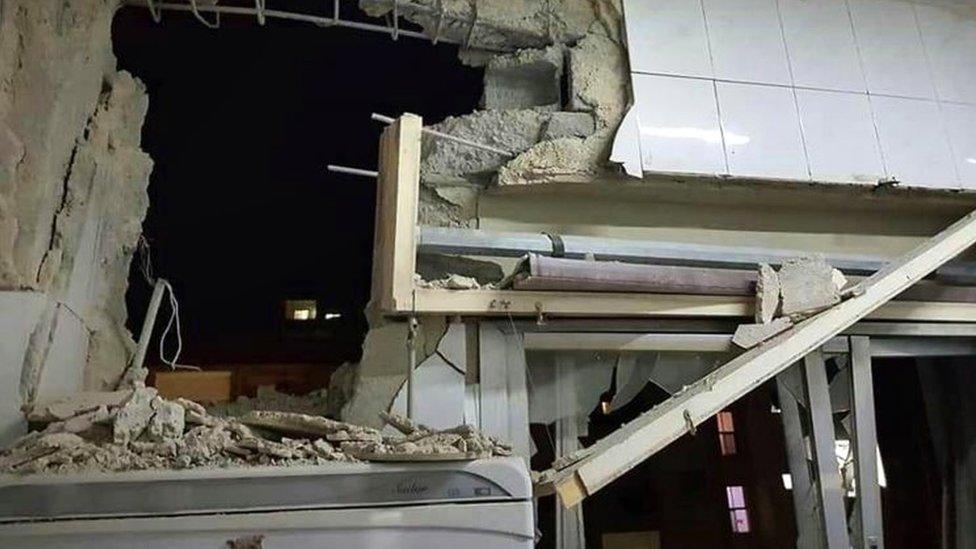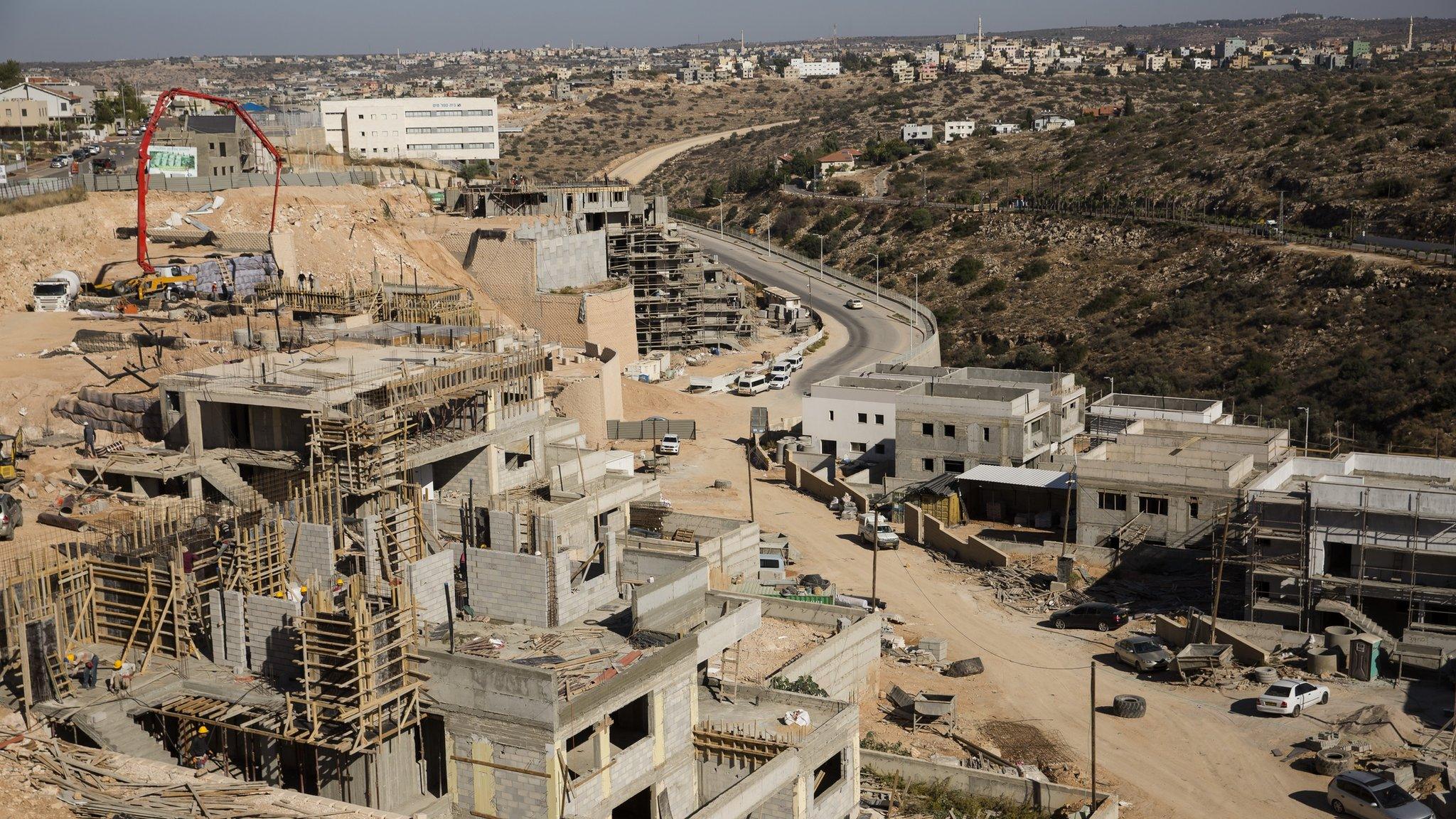Israel-Iran: Risk of an all-out conflict grows after Syria strikes
- Published

Israel has carried out strikes against Iranian forces in Syria
The Israeli Air Force's strikes against targets in Syria mark the latest stage in a developing struggle between Israel and Iran, one that inevitably risks a much broader conflict.
Iran is eager to bolster its military footprint in Syria. Israel is just as eager to stop it.
But Iran shows no sign of faltering. It is developing its military capabilities and showing a greater self-confidence. The two players are struggling to establish new "rules" of deterrence, but the risk is that as the level of their military exchanges increases, so the risk of an all-out conflict grows too.
The cycle of attack and riposte is all too familiar.
Ostensibly the Israeli air attacks were prompted by the firing of four rockets from Syrian territory earlier in the week which were intercepted by Israeli Iron Dome air defences.
Unconfirmed reports suggest that the rocket fire may itself have been an Iranian-ordered response to Israeli attacks against Iran's allies, either in Iraq or in the Gaza Strip.
The scale of the Israeli riposte was significant. The targets were associated with Iran's Quds Force, some of which were inside Syrian military facilities.
A Syrian headquarters was also attacked along with six Syrian surface-to-air missile batteries, to afford the Israeli jets the necessary freedom of action. A senior Israeli security source noted that this was "a large-scale retaliation, including Iranian casualties".
The message from Israel to Tehran is clear. Any attacks out of Syria will be met by a disproportionate response. Now it is upping the military stakes.
But Iran is sending a message of its own too.
Despite a long-running Israeli air campaign designed to constrain the Iranian build-up in Syria, Tehran is determined that this project will continue. It is a close ally of the Assad regime in Damascus and it sees Syrian-territory both as a front line across which to confront Israel and as an important link to its ally Hezbollah in Lebanon.
So far, events are all too familiar. But some of the underlying strategic factors are changing, and this makes the rivalry between Israel and Iran ever more dangerous.

Syria's state media has released images of what it says are destroyed houses near Damascus
The first shift is in Iran's capabilities.
The attacks against Saudi oil installations in September by a mix of drones and cruise missiles are generally attributed to Tehran, although it denies this. The precision of the attacks and the effectiveness with which they were carried out surprised many commentators.
Israel looks set to face a much more dangerous missile threat in the future: a combination of Iranian ballistic and cruise missiles, as well as a wide-ranging effort by Tehran to improve the range and accuracy of the missiles it supplies to its allies like Hezbollah and groups in Gaza.
This so-called "precision programme" has been under way for some time. The success of the attacks in Saudi Arabia demonstrated what this might mean in practice.
Iran, for all the constraints imposed upon it by international sanctions, has become a significant military player in the region. This has been brought into focus by the publication this week by the Pentagon of a new Iran Military Power Report.
At one level, there is a good deal of strategic messaging here. The US already puts out regular reports on Russian and Chinese military power - to suggest that Iran is in their category is absurd.
But Tehran has honed its abilities and, according to the report, has focused in on three broad areas of activity: ballistic missiles (its alternative to a sophisticated air force, to deliver destructive power at long range); naval forces to threaten international navigation in the Gulf and the Strait of Hormuz; and unconventional capabilities, that is the use of partners and allies - a network of groupings ranging across the region, including Lebanon, Iraq, Yemen and the Gaza Strip.
Trump on Syria: "Let someone else fight over this long bloodstained sand."
The second shift is in the wider diplomatic context in the region, notably a perception of US "retreat", only confirmed by President Donald Trump's abandonment of America's Kurdish allies in Syria. This has provided an environment in which key local players - Israel, Turkey and Iran - are all intent on safeguarding their own interests in their own way.
Washington's "retreat" has been Moscow's opportunity, building on its key effort to ensure the survival of the Assad regime. But beyond this and its desire to play up its role, in contrast to Washington's diminishing influence, defining Russia's strategic direction is not easy. It is clearly a significant diplomatic player in Syria.
It also of course maintains strong diplomatic ties with Israel, and effectively turns a blind eye to Israeli air operations over Syria despite having sophisticated air defences deployed there. But despite a significant effort from Israeli Prime Minister Benjamin Netanyahu, Russian President Vladimir Putin has either been unwilling or unable to bring much leverage to bear upon Tehran.
These two factors - Iran's improving capabilities and self-confidence, and the growing self-reliance of regional players - underpin the growing danger of the current situation. Iran and Israel are locked in a strategic rivalry which at any point could erupt into a war on many fronts.
For some analysts, the direction of travel is clear. The question is not so much "Will there be an all-out conflict?" but "When?"
- Published20 November 2019

- Published19 November 2019

